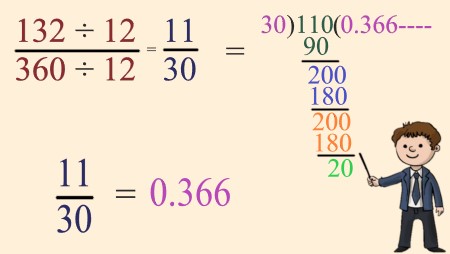Lesson Topics Discussion Quiz: Class Homework |
Example1 |
Title: Decimal Equivalent Fraction |
Grade Lesson s2-l4 |
Explanation: The best way to understand SAT-4 is by looking at some examples. Take turns and read each example for easy understanding. |
Examples
Topics → Definition Example1
Solve the expression \$4/9 × 11/8 ÷ 5/3\$.
Step: 1 |
|
First, multiply the fractions \$4/9\$ and \$11/8\$. |
|
Explanation: In this step, begin by multiplying the fractions. The result is \$44/72\$. |
|
Step: 2 |
|
Now, divide the resultant fraction by \$5/3\$ . |
|
Explanation: In this step,Division of fractions is equivalent to multiplying by the reciprocal. Therefore, dividing by \$5/3\$ is rewritten as multiplying by its reciprocal, \$3/5\$, then we get \$132/360\$ |
|
Step: 3 |
|
Find the greatest common divisor (GCD) of 132 and 360. The GCD is 12. Divide both numerator and denominator by 12: |
|
Explanation: The greatest common divisor (GCD) of 132 and 360 is 12. By dividing the numerator and denominator by 12, we get \$11/30\$. Converting \$11/30\$ to a decimal gives 0.366. |
|
Copyright © 2020-2024 saibook.us Contact: info@saibook.org Version: 4.0 Built: 26-Mar-2025 12:00PM EST


